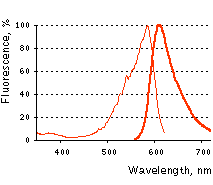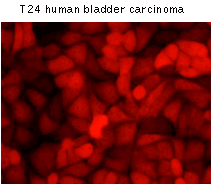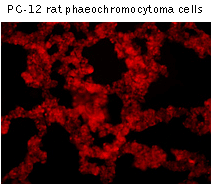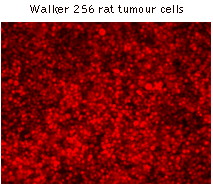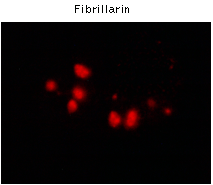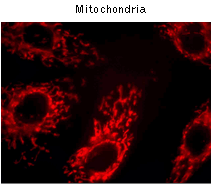
|
||||||||||
|
||||||||||

JRed
SUPPORTRESOURCES |
Red fluorescent protein JRed- True-red fluorescence
Main properties
Recommended filter sets and antibodiesJRed can be recognized using Anti-KillerRed antibody (Cat.# AB961) available from Evrogen. JRed can be detected using TRITC filter set or similar. Recommended Omega Optical filter sets are QMAX-Red and XF174. Performance and useJRed can be expressed in eukaryotic cells; however, it is not appropriate for expression in prokaryotic. JRed possesses relatively fast photobleaching rate upon arc lamp irradiation. At the same time, it exhibits high photostability when excited by 543 nm laser line in a confocal microscope, with the photobleaching time several times longer compared with DsRed2. JRed could show phototoxicity when bleached. Mammalian cells transiently transfected with JRed vector give red fluorescence without visible aggregation. Mammalian cells transiently transfected with JRed expression vectors produce bright fluorescence in 24 hours after transfection. JRed suitability to generate stably transfected cells has been proven by Marinpharm company.
Despite dimerization capacity, JRed demonstrates successful performance in fusions with subcellular localization signals and many cellular proteins including BH3 interacting domain death agonist (BID), nucleolar protein fibrillarin, dopamin transporter (hDAT). However, we recommend that you use monomeric TagFPs for protein labeling applications. References:
|
||||||||||||||||||||||||||||||||||||||||||||||||||
|
Copyright 2002-2023 Evrogen. All rights reserved. Evrogen JSC, 16/10 Miklukho-Maklaya str., Moscow, Russia, Tel +7(495)988-4084, Fax +7(495)988-4085, e-mail:evrogen@evrogen.com |




